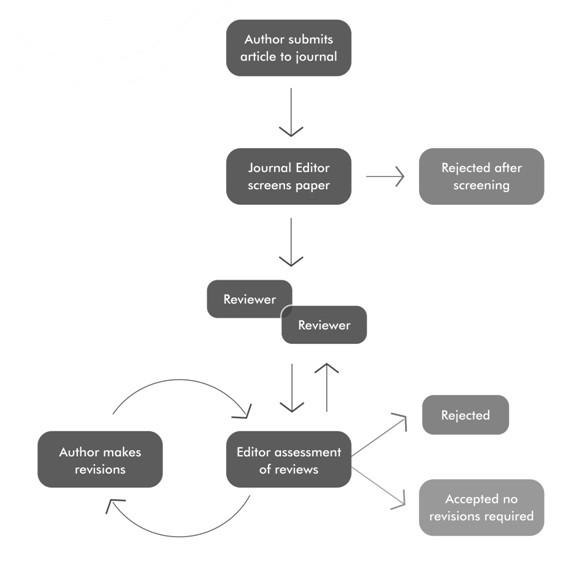Peer Review Process
All papers are fully peer-reviewed. We only publish articles that have been reviewed and approved by highly qualified researchers with expertise in a field appropriate for the article. We used a double-blind peer-reviewing process. Detailed information about the flow for the manuscript submission (author) to the acceptance by the editor is shown in the following figure:

Author submits article
The author submits the paper to the journal via an online system. First-time users can register, and if already have an account the user can log in immediately.
Editorial and Peer Review Procedure
- Initial Screening. All submitted manuscripts will be screened by the Managing Editor to determine whether the manuscript abides by the focus, scope, and template of Jurnal Law Ius Quia Iustum. Manuscripts that do not meet these basic requirements will be rejected without further review.
- Plagiarism Check. If the manuscript meets these two criteria, it is checked for plagiarism or duplicate publication using a similarity check program (Turnitin).
- Peer-review. All manuscripts that pass the initial screening stage and plagiarism check, will be distributed to two experts in the relevant field to undergo a double-blind peer-review.
- First Decision. A decision on a peer-reviewed manuscript will be given once both reviewers have submitted their review reports. In the event that both reviewers have differing opinions about the manuscript, the final decision will be handed over to the Editor-in-Chief. At this stage, the author(s) will receive at least one of this decision: accepted without revision; accepted with minor revision; accepted with major revision; or rejected.
- Revision Stage. Manuscripts that have been recommended for revision will be returned to the submitting author. Author(s) will have up to 2 weeks to revise the manuscripts.
- Final Decision. All accepted manuscripts will go through the final editing and layout process.